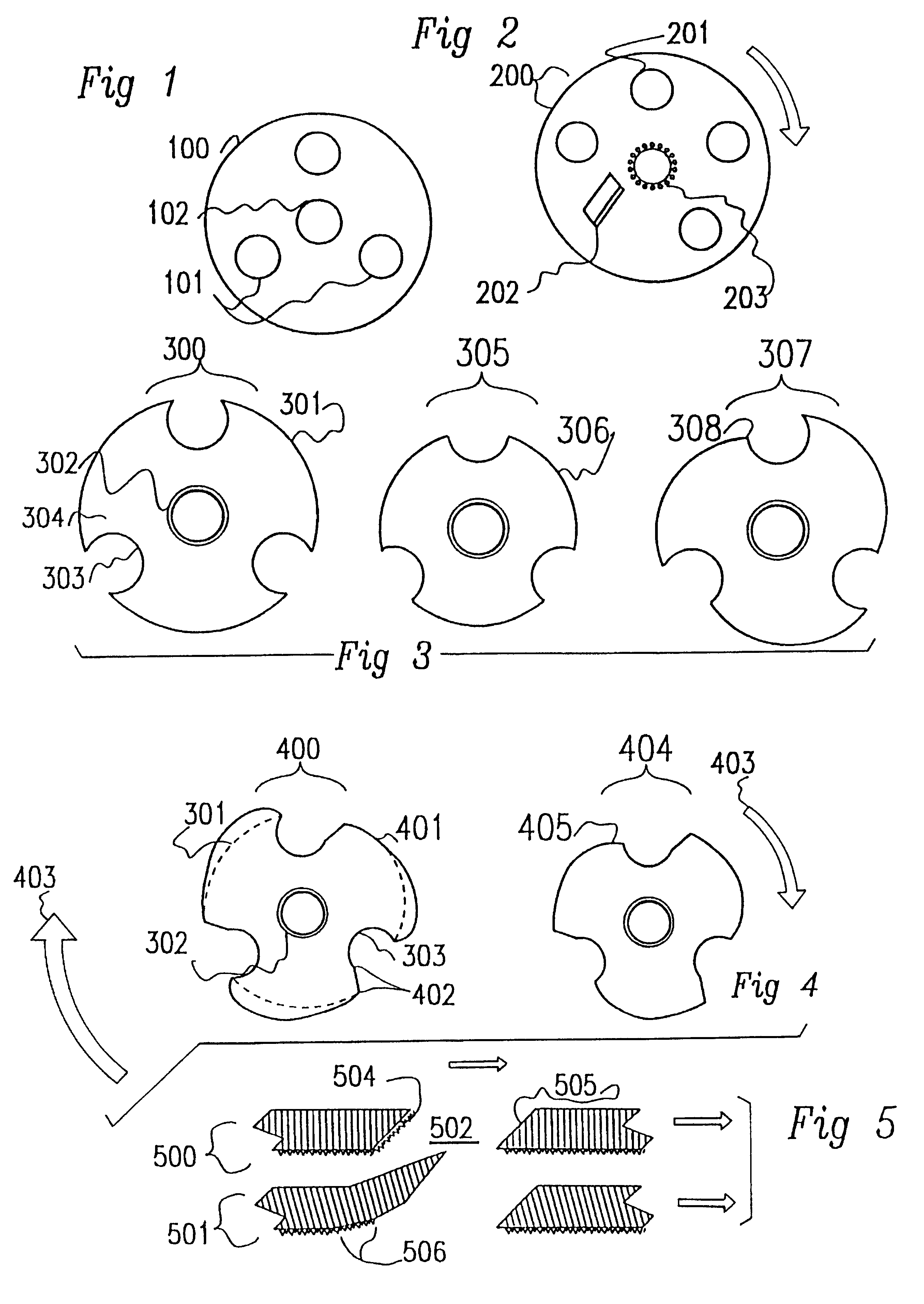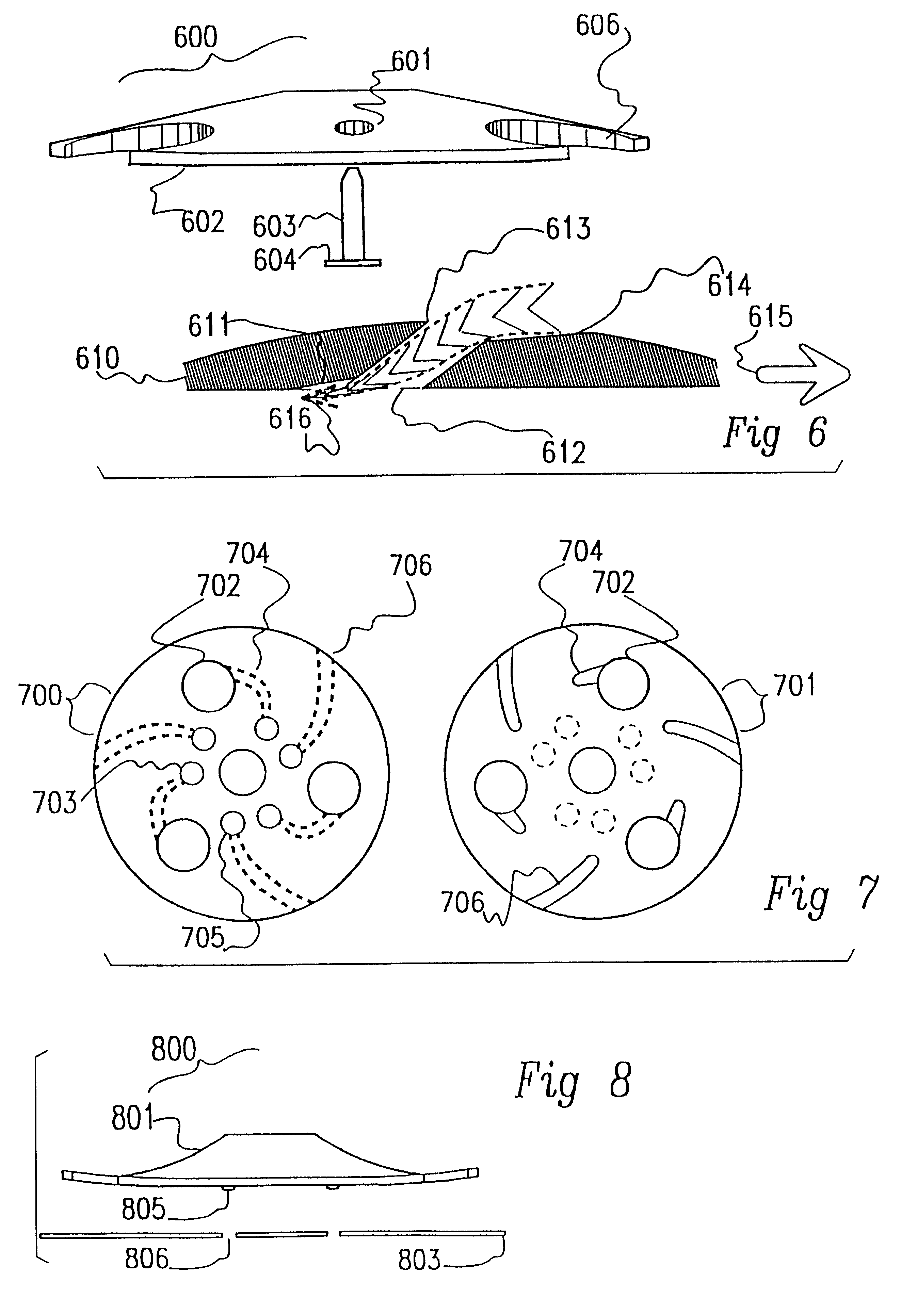Backing plates for abrasive disks
a technology of backing plates and abrasives, which is applied in the direction of grinding/polishing hand tools, metal-working equipment, manufacturing tools, etc., can solve the problems of unsatisfactory scalloped surface of work surfaces, inability to use disks for finely controlled work, and sanding block treatment, so as to protect users from injury
- Summary
- Abstract
- Description
- Claims
- Application Information
AI Technical Summary
Benefits of technology
Problems solved by technology
Method used
Image
Examples
Embodiment Construction
The accessories to be described herein for use with an angle grinder include a disposable rotary sanding disk (where "disk" is as defined above) having one or more relatively large viewing / ventilation apertures, and a resilient backing plate, also having similar viewing / ventilation apertures which has been developed particularly for use in conjunction with the disk. The large apertures allow the operator to see the work surface while it is being abraded. It appears that the large apertures are also of great benefit by allowing the work surface to stay significantly cooler than when a prior-art unperforated disk is used.
Fears as illustrated by what is available in the prior art--that the holes might entrap projections from the work surface--are unfounded in trials; the high rotation speed together with raised trailing edges on the holes appears adequate to prevent a projection from entering the apertures of a spinning disk. The holes also assist in providing the disk with more resili...
PUM
 Login to View More
Login to View More Abstract
Description
Claims
Application Information
 Login to View More
Login to View More - R&D
- Intellectual Property
- Life Sciences
- Materials
- Tech Scout
- Unparalleled Data Quality
- Higher Quality Content
- 60% Fewer Hallucinations
Browse by: Latest US Patents, China's latest patents, Technical Efficacy Thesaurus, Application Domain, Technology Topic, Popular Technical Reports.
© 2025 PatSnap. All rights reserved.Legal|Privacy policy|Modern Slavery Act Transparency Statement|Sitemap|About US| Contact US: help@patsnap.com



